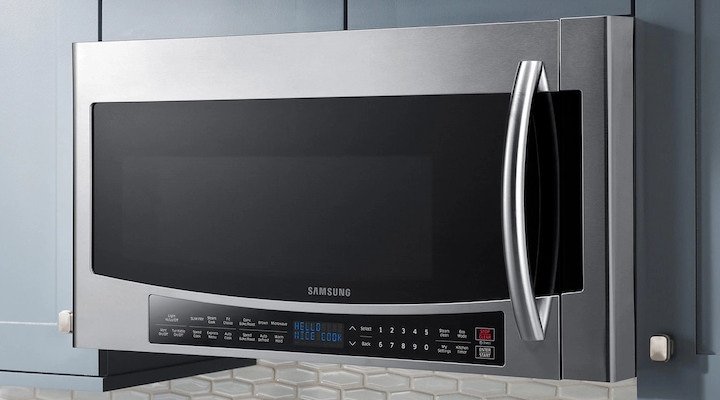
The E2 error code in Samsung microwaves generally indicates a sensor error. This code is a little nudge from your microwave saying it’s having trouble with its temperature or humidity sensors. Your microwave uses these sensors to make sure everything’s cooking just right, so when they aren’t working properly, it can’t guarantee your food will cook evenly or safely. But don’t worry! Just because you see an E2 doesn’t always mean you need to rush to the phone for a technician. Sometimes a little troubleshooting at home can work wonders. Let’s dive deeper into understanding this code and when it’s time to call for help.
Understanding the Samsung Microwave E2 Error Code
So, what exactly causes this mysterious E2 error? Well, here’s the deal: the sensors in your microwave that detect temperature and humidity are vital for its operation. Imagine them as the eyes and ears of your microwave—without them, it’s cooking blind. The E2 error pops up when something is amiss with these sensors. It could be a minor glitch or, occasionally, a signal of a more significant problem that needs attention.
Now, you might be wondering, why do these sensors fail in the first place? It’s often due to built-up grime or faulty wiring. Over time, food particles and grease can accumulate in the microwave, affecting the sensors’ ability to do their job. Alternatively, physical damage or wear and tear from regular usage could also lead to sensor malfunction. Remember those times you might have overcooked popcorn or forgotten to cover a dish? Those tiny mistakes can sometimes add up.
Understanding the root cause is crucial because it guides you on whether you can handle the fix yourself or if it’s time to bring in the pros. Generally, if the code persists despite your attempts to clean and reset your microwave, it might indicate a need for expert intervention.
When Should You Try DIY Fixes?
Before you rush off to call a technician, it’s worth trying a few simple troubleshooting steps. First, consider giving your microwave a good clean. Unplug it and wipe down the interior, paying special attention to the areas around the sensors. It’s like giving your microwave a little TLC; sometimes, that’s all it needs! Make sure your hands are dry and that the microwave is cool to the touch before you do this.
Next, you could try resetting the microwave. Unplug it from the power source, wait a few minutes, then plug it back in. This acts like a mini reboot for its sensors and system. Think of it like restarting your computer when it gets a little glitchy—it often solves minor issues.
If you’re comfortable, you might also want to inspect the sensors for any obvious signs of damage or misplacement. However, only do this if you feel confident; otherwise, it’s best to leave it to the professionals. These DIY steps won’t fix every problem but can resolve minor issues and save you time and expense.
When It’s Time to Call a Technician
If after cleaning and resetting, that pesky E2 code still hovers on your microwave’s display, it’s probably time to get some professional help. Persistent error codes might indicate underlying problems that require expert tools and technical know-how. A technician can conduct a thorough check, diagnosing not just the sensor issues but potentially uncovering broader electrical or mechanical concerns.
Calling in a professional ensures safety, which is paramount. Microwaves, after all, are complex appliances with high-voltage components that can be dangerous if mishandled. Just as you wouldn’t try to fix a leaky gas pipe without training, addressing internal microwave issues without expertise can be risky. Trusting a knowledgeable technician ensures that the problem is fixed right—the first time.
Moreover, a technician can provide you with insightful maintenance tips to prevent future errors. Regular check-ups, like health screenings for your kitchen appliances, can extend their life and ensure they operate efficiently. So, if in doubt, or if the problem persists, it’s always wise to make that call.
Preventive Tips to Avoid Future E2 Errors
Nobody likes dealing with error codes, and the good news is there are steps you can take to reduce the chances of seeing that E2 code pop up again. Regular maintenance is your microwave’s best friend. Keeping your microwave clean, especially the interior and the sensor areas, can prevent unnecessary grime build-up. It’s akin to giving your car regular washes to keep it in tip-top shape.
Also, be mindful of how you use your microwave. Avoiding running it empty or overloading it with food can lessen the strain on its components. It’s like easing up on a car’s acceleration to prolong its engine life—simple actions can make a big difference.
Finally, familiarize yourself with your microwave’s manual. It’s a treasure trove of knowledge about how to use your appliance correctly and troubleshoot minor issues. By understanding common error codes and their meanings, you’ll be better equipped to handle them as they arise.
In summary, the E2 error code in your Samsung microwave isn’t the end of the world. With a few preventive measures and basic troubleshooting skills, you can often resolve the issue or know when it’s time to call in the experts. Keep your microwave happy and healthy, and it will continue to be your kitchen ally for years to come.